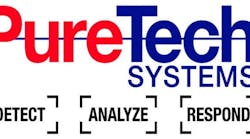My last post was about clothing and sunglasses policies at banks, and it seems that my blogging this week is stuck on the topic of bank security. A bank robbery this morning at a SunTrust location in the Atlanta suburbs of Vinings, Ga., saw two men get away with an undisclosed sum (see story on AJC.com), but before the pair got away, their mugs were captured on the bank's video surveillance cameras. The best two images were released by the Federal Bureau of Investigation, and I've published them here:
When I look at the video stills, I can see distinct lines around the mens' faces. In the one where the lines are more distinct, it seems to indicate that this is interlaced video. What does that mean and what does that tell us?
It means that the cameras are either traditional analog cameras, because analog video by its very definition uses line interlacing. Basically if you think of an image on your TV, each time it refreshes the image, it actually refreshes only half the lines. One refresh might change all of the odd numbered lines, and the next would be the even numbered lines, then the next is the odd numbered lines again ... and so on. Thus, a still image coming from interlaced video might show some lines that change if there is motion. When you hear NTSC (U.S. standard for analog video) or PAL (European standard for analog video), you should know that by nature it means interlaced video. And to get back to our morning bank robbery, you can see in these stills that the background doesn't appear to be interlaced, and that's because nothing moved in the background. But the suspects' images appear interlaced because they were moving in the camera's field of view.
But interlaced video isn't limited to analog video. IP network video surveillance cameras sometimes use this model too. When you see a camera company mention that its products are something like 1080i, that means it's a high-definition stream provided in an interlaced manner. The other option is progressive scan, which sends the whole image each time rather than just half the lines. In the world of IP video, it seems that most of the cameras are going toward progressive scan.
So, the question I want to raise is whether facilities that likely need to identify unknown suspects should even consider interlaced video. When we look at these stills, it's clear that this bank branch is using some pretty good video technology. The images are quite clear (in the background at least); the colors are good, and the focusing seems well done. But the quality of the color and the focus isn't of much benefit because of the interlacing effect.
What do you think? Should interlacing be retired for high-importance camera locations? Are these images good enough for identification? When should you use interlaced video?
Please weigh in with your comments.
-Geoff Kohl, editor-in-chief, SecurityInfoWatch.com




